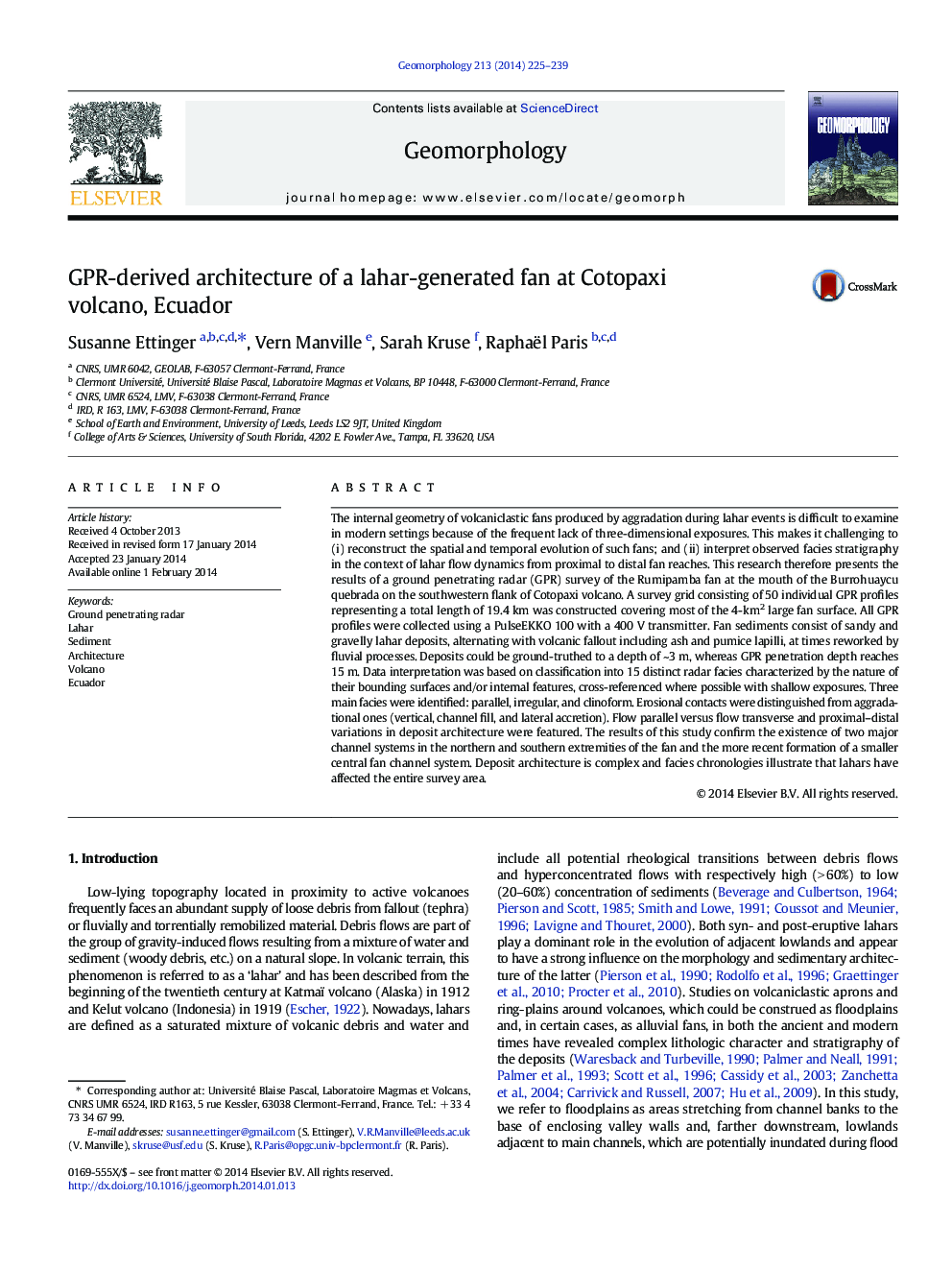| کد مقاله | کد نشریه | سال انتشار | مقاله انگلیسی | نسخه تمام متن |
|---|---|---|---|---|
| 6432509 | 1635436 | 2014 | 15 صفحه PDF | دانلود رایگان |

- Internal structure of lahar deposits imaged by GPR reflects fan evolution over time
- Fan sediments are characterized by 15 radar patterns to a depth of c. 15Â m
- Extensive erosional features testify from larger volume flows in the past
- Large clinoforms indicate former prograding fan front
- During lahars, successive flooding on northern and southern fan segments occurs
The internal geometry of volcaniclastic fans produced by aggradation during lahar events is difficult to examine in modern settings because of the frequent lack of three-dimensional exposures. This makes it challenging to (i) reconstruct the spatial and temporal evolution of such fans; and (ii) interpret observed facies stratigraphy in the context of lahar flow dynamics from proximal to distal fan reaches. This research therefore presents the results of a ground penetrating radar (GPR) survey of the Rumipamba fan at the mouth of the Burrohuaycu quebrada on the southwestern flank of Cotopaxi volcano. A survey grid consisting of 50 individual GPR profiles representing a total length of 19.4Â km was constructed covering most of the 4-km2 large fan surface. All GPR profiles were collected using a PulseEKKO 100 with a 400Â V transmitter. Fan sediments consist of sandy and gravelly lahar deposits, alternating with volcanic fallout including ash and pumice lapilli, at times reworked by fluvial processes. Deposits could be ground-truthed to a depth of ~3Â m, whereas GPR penetration depth reaches 15Â m. Data interpretation was based on classification into 15 distinct radar facies characterized by the nature of their bounding surfaces and/or internal features, cross-referenced where possible with shallow exposures. Three main facies were identified: parallel, irregular, and clinoform. Erosional contacts were distinguished from aggradational ones (vertical, channel fill, and lateral accretion). Flow parallel versus flow transverse and proximal-distal variations in deposit architecture were featured. The results of this study confirm the existence of two major channel systems in the northern and southern extremities of the fan and the more recent formation of a smaller central fan channel system. Deposit architecture is complex and facies chronologies illustrate that lahars have affected the entire survey area.
Journal: Geomorphology - Volume 213, 15 May 2014, Pages 225-239